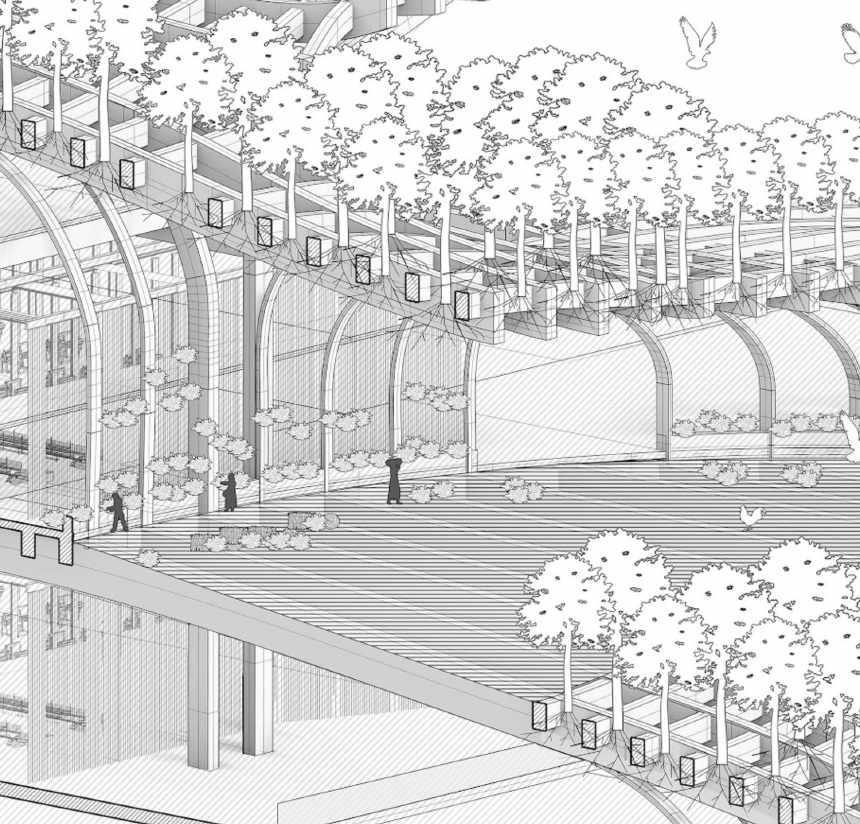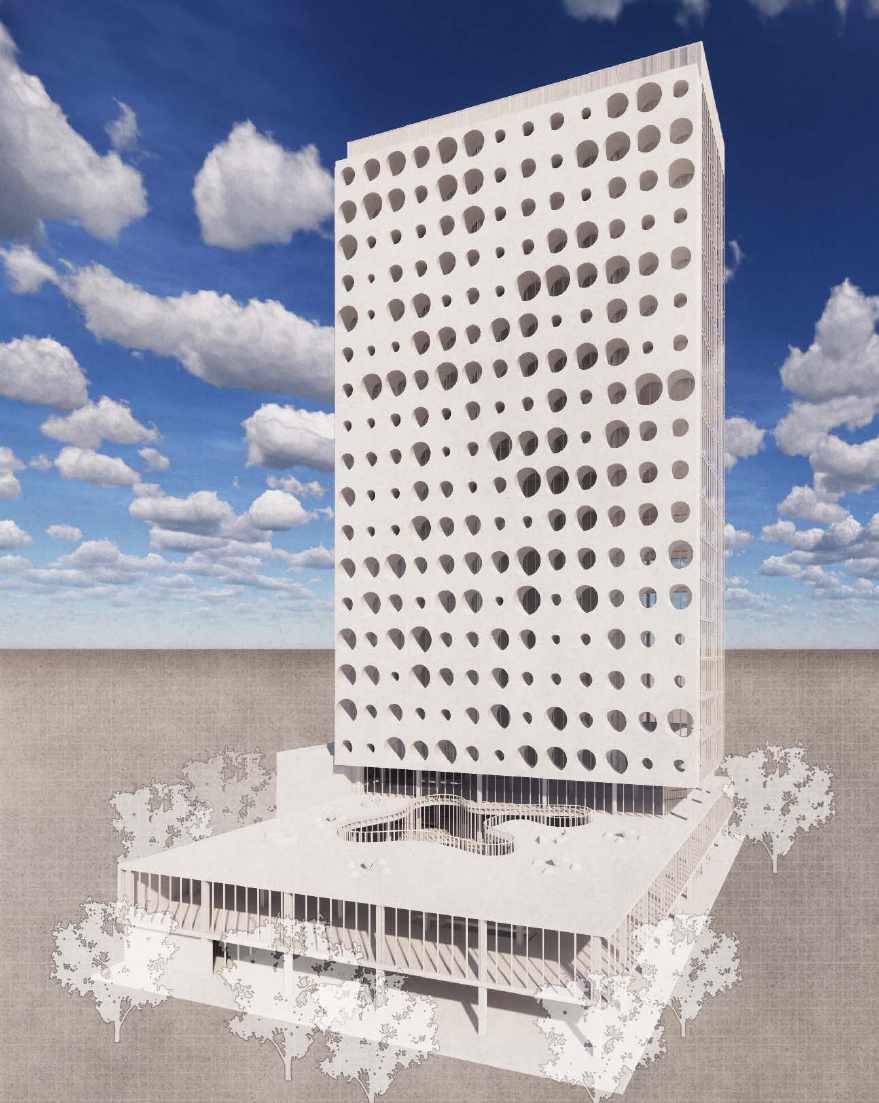
2 minute read
07/ Super Tall Super Tall, GSAPP, 2020
07/Super Tall
Program: Office Building Location:New York City
This courses uses the technique of infographics to analyze the comprehensive design of a hypothetical super tall building located in New York City.
Starting from a series of diagrams analyzing the logic of organizing the different elements in the core of the building, the analysis delves more into the structural and MEP systems of the project. It extracts the organizing logic that is essential in coordinating all the individual parts within the convoluted networks.
It ends by looking closer at the individual MEP and structural elements, such as the cooling tower, the formwork and the metal deck,which are normally ignored during our own design process, but are crucial to the actual functioning of a supertall building.
(de)Construct Nature

Rendering (Inspired by architect Wang Shu)
collection c.
Can we use poetics to negotiate between the natural and constructed worlds ?
“Post-modern” architecture, simply by its name, presents responses to modernity, more specifically, to the disillusion of modernity. Phenomenology is no doubt part of it. Despite the internal disagreement and transformation within the discourse of phenomenology and its use in architecture, it is always about using the “poetics,” either in places and materials, or in experiences and imaginations, to reenchant the disillusioned and placeless world that is characterized by the universalization of culture that neglects individuality . On the other hand, by questioning the universality of modernity, it is questionable if phenomenology, with the concept of poetic, is creating a new myth of “collective spirituality” that over-emphasizes sense and experience in place of the old myth of reason and progress. ... As argued by Kenneth Frampton, our modern environment is characterized by “the ubiquitous placeless-ness” and our building is “universally conditioned by optimized technology.” Modernity prompted us to both prioritize the universal rules of thinking that is called reason and the universal mode of production guided by technology , overtaking the world quickly with a universal civilization accompanied with a universal appearance of “megalopolitan development” of “the freestanding high-rise and the serpentine freeway” across the world... The creation of poetic architectural experience is hence very critical in resisting such disenchantment of universalization by confronting the diminishing of attention on subjective spatial experience and the individual sensibilities in specific architectural space. By the definition of Oxford Dictionary,“poetic” refers to “having an imaginative or sensitive style of expression.” Therefore, the attempt to create “poetics” in architecture prompts the architect to express the built form in order to stimulate the subjective imagination and sensitivity of the individuals. This naturally challenges and confronts the effect of universalization by emphasizing the experience of the subject over the mere function and economy of the object of building.
- Excerpt from Re-enchant with Phenomenology? An Examination of the “Poetic Experience as a Resistant Force against
Universal Placeless-ness Paper written during seminar of
Professor Bernard Tschumi Columbia University



